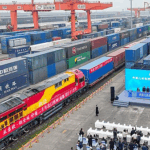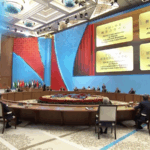The second China-Central Asia Summit in Astana has transformed regional diplomacy from vision to action, with six nations unveiling a roadmap for ‘high-quality cooperation’ through 2026. 💼🚀 Trade between China and Central Asia hit a record $94B in 2024, fueling new deals on infrastructure, green tech, and cultural exchanges.
Silk Road 2.0: Beyond Buzzwords
Dubbed the ‘China-Central Asia spirit’ by President Xi Jinping, this partnership focuses on equality and win-win projects – think railways, smart agriculture, and anti-desertification programs. 🌱🚄 Unlike geopolitical chess games, this collab centers on ‘what’s the fix?’ over ‘who’s the boss?’
From Paper to Progress
The Astana Declaration upgrades 2023’s Xi’an blueprint with concrete plans: simplified trade rules, a China-Kyrgyzstan-Uzbekistan rail project, and joint education hubs. 📜➡️🔧 With a 2025-2026 action year locked in, expect more tech-driven, eco-friendly initiatives under the Belt and Road framework.
As global supply chains wobble, this partnership offers Central Asia a stability anchor – and Gen Z a case study in how ‘slow diplomacy’ can outpace flashy summits. 🤝💡
Reference(s):
From consensus to action in new era of China-Central Asia relations
cgtn.com








